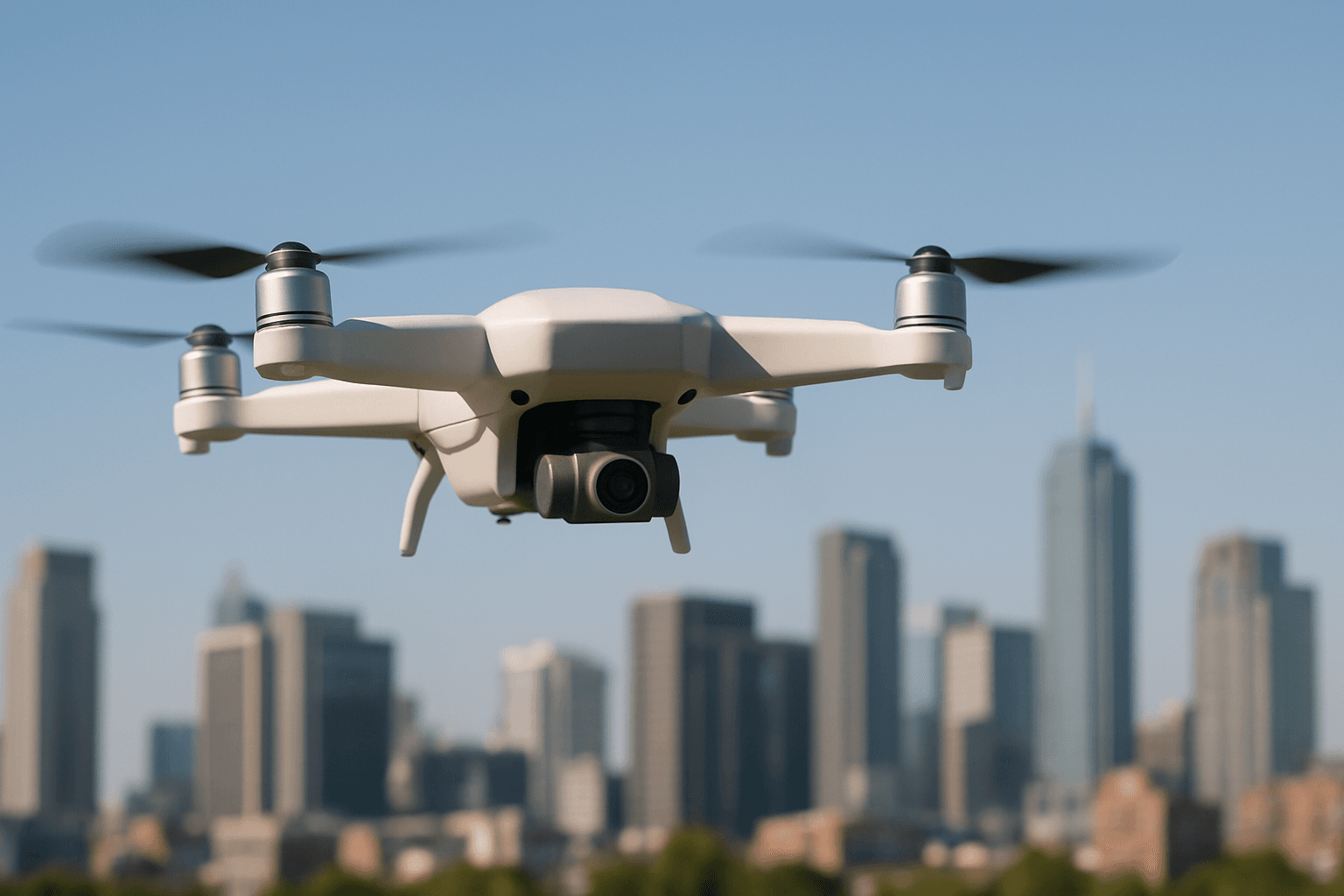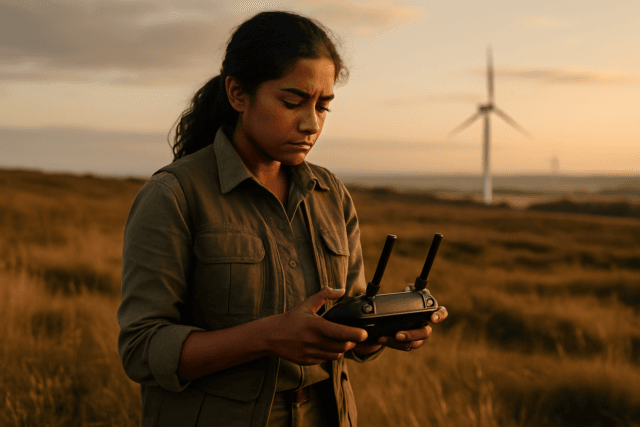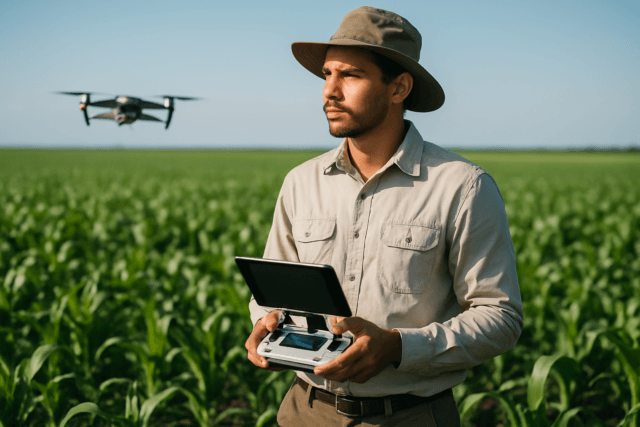Drones have become increasingly popular for both recreational and commercial use. As the number of drones in the sky grows, so does the importance of understanding and following the regulations set forth by the Federal Aviation Administration (FAA). Staying informed about these rules is crucial for ensuring safe and legal drone operations. This guide provides a comprehensive overview of the FAA drone regulations in 2025, covering everything from registration and Remote ID to operational requirements and waivers.
Who Needs to Know About FAA Drone Regulations?
- Recreational Flyers: Individuals who fly drones for personal enjoyment and hobby purposes must adhere to specific safety guidelines and operational restrictions.
- Commercial Drone Pilots: Professionals who use drones for business purposes, such as aerial photography, inspections, or delivery services, are required to obtain a Remote Pilot Certificate (Part 107 license) and comply with additional regulations.
- Foreign Pilots: Non-U.S. citizens who wish to fly drones in the United States must follow FAA regulations, which may include registration and certification requirements.
- Public Safety Officials: Law enforcement, fire departments, and other government agencies utilizing drones for emergency response or public safety operations must also comply with FAA regulations.
Drone Registration Requirements
Registering your drone with the FAA is a fundamental requirement for most drone operations. Here’s what you need to know:
When is Registration Required?
- Drones weighing more than 0.55 pounds (250 grams) must be registered with the FAA.
- All drones operated under Part 107, regardless of weight, must be registered.
Who Can Register a Drone?
- You must be at least 13 years old to register a drone. If you are under 13, someone older must register the drone for you.
- You must be a U.S. citizen or legal permanent resident.
How to Register
- Create an Account: Register your drone at FAADroneZone.
- Provide Information: You will need to provide your physical and mailing address, email address, phone number, and the make and model of your drone. You may also need to provide the specific Remote ID serial number provided by the manufacturer.
- Pay the Fee: Registration costs \$5 per drone and is valid for three years.
Displaying the Registration Number
- Your drone must be marked with your FAA registration number.
- The registration number must be displayed on an external surface of the drone in a legible condition.
Remote ID: The Digital License Plate for Drones
Remote ID is a crucial component of drone safety and accountability. It functions as a “digital license plate” for drones, broadcasting identification and location information during flight.
Who Needs Remote ID?
- As of September 16, 2023, all drones requiring registration, including those flown for recreation, business, or public safety, must operate in accordance with the Remote ID rule.
How to Comply with Remote ID
There are three ways to comply with the Remote ID regulations:
- Standard Remote ID Drone: Operate a drone with built-in Remote ID capability. These drones broadcast identification and location information directly from the drone.
- Remote ID Broadcast Module: Attach a Remote ID broadcast module to your drone. This module retrofits drones with Remote ID capabilities.
- FAA-Recognized Identification Area (FRIA): Fly your drone within an FAA-Recognized Identification Area (FRIA). FRIAs are designated areas where drones can operate without broadcasting Remote ID information.
Information Broadcast by Remote ID
- Drone ID
- Drone location and altitude
- Control station location
- Emergency status (if any)
General Drone Flying Laws & Federal Regulations
No matter your purpose, all drone pilots must adhere to these fundamental regulations:
Key Regulations
- Fly at or below 400 feet.
- All eligible drones (over 250 g to 25 kg) must be registered with the FAA.
- Your drone must be marked with your FAA registration number.
- Use B4UFLY Mobile App – the safety app from the FAA, which uses your GPS location to provide real-time information about airspace restrictions and other flying requirements.
- Be aware of and avoid no-fly zones, especially around airports and other restricted areas.
- You must fly within the visual line of sight so that you or the observer can see the drone at all times.
Operating Limitations
- The airspeed of the sUAS may not exceed 87 knots (100 miles per hour).
- The altitude of the sUAS cannot be higher than 400 feet above ground level, unless the sUAS: Is flown within a 400-foot radius of a structure.
- The minimum flight visibility, as observed from the location of the ground control station must be no less than 3 statute miles.
- The minimum distance of the sUAS from clouds must be no less than 500 feet below clouds and 2,000 feet horizontally away from clouds.
Safe Operation
- No person may operate a civil small unmanned aircraft system unless it is in a condition for safe operation.
- Prior to each flight, the remote pilot in command must check the sUAS to determine whether it is in a condition for safe operation.
- No person may continue flight of the sUA when he or she knows or has reason to know that the sUAS is no longer in a condition for safe operation.
- Avoid operating your drone in a way that risks the safety of the national airspace.
Rules for Recreational Pilots
If you are flying a drone for fun, here are the rules you need to follow:
- Take the Recreational UAS Safety Test (TRUST) and carry proof of test passage when flying.
- Fly at or below FAA-authorized altitudes in controlled airspace (Class B, C, D, and surface Class E designated for an airport) only with prior FAA authorization by using LAANC or DroneZone.
- Fly at or below 400 feet in Class G (uncontrolled) airspace.
- Keep your drone within the visual line of sight or use a visual observer who is co-located (physically next to) and in direct communication with you.
- Give way to and do not interfere with other aircraft.
- Do not operate your drone in a manner that endangers the safety of the national airspace system.
Rules for Commercial Pilots
If you want to fly your drone for work, you must follow these drone laws:
- To fly drones commercially, you must obtain a Remote Pilot Certificate – Part 107 license from the FAA.
- You must pass the initial aeronautical knowledge exam: “Unmanned Aircraft General – Small (UAG)”.
- You must be at least 16 years old.
- You must be able to understand, read, write, and speak English.
- You must be mentally and physically able to operate a UAV safely.
- Before signing up for the knowledge test, create an IACRA (Integrated Airman Certification and Rating Application) profile and obtain an FAA Tracking Number (FTN).
- You can fly drones at night, over people, and moving vehicles without a waiver under Part 107 as long as the rules are followed. However, you still need airspace authorization for night operations in controlled airspace under 400 feet.
Rules for Foreign Pilots
If you are not a U.S. citizen and you want to fly drones in the U.S., here are the rules you need to know:
- Foreign drone pilots must register their drone through FAADroneZone.
- You must take the TRUST test (Recreational UAS Safety Test) before flying in the U.S.
- Foreign commercial drone pilots must obtain an FAA Remote Pilot Certificate (Part 107 License).
- Drones must be carried as carry-on luggage. Checked luggage cannot contain drones. Check with your airline and TSA guidelines before flying.
FAA Part 107 Waivers
The FAA understands that not everything will fall neatly into the set of the FAA Part 107 regulations. That is why they created the FAA Part 107 waivers and authorizations. If you want to operate outside of the standard regulations, you can apply for a waiver.
What is a Waiver?
A waiver is a legal document issued by the FAA that authorizes a drone pilot to deviate from certain provisions of Part 107. Waivers allow for operations that would otherwise be prohibited, provided the applicant can demonstrate that the proposed operation can be conducted safely.
Common Types of Waivers
- Night Operations: Allows drone flights during nighttime with appropriate anti-collision lighting.
- Operations Over People: Permits flying drones over people not directly involved in the operation.
- Beyond Visual Line of Sight (BVLOS): Enables flying drones beyond the operator’s line of sight.
- Operation from a Moving Vehicle or Aircraft
- Operation of Multiple Small Unmanned Aircraft
- Operation Near Aircraft; Right-of-Way Rules
- Operations Over Moving Vehicles
How to Apply for a Waiver
- Prepare Your Safety Case: Describe your proposed operation in detail, including safety measures and risk mitigation strategies.
- Submit the Application: Use the FAA’s DroneZone portal to submit your waiver request.
- FAA Review: The FAA reviews waiver applications on a case-by-case basis, which may involve additional questions or requests for more information.
FAA Enforcement
The FAA actively enforces drone regulations to ensure the safety and security of the national airspace. Violations of FAA regulations can result in severe penalties:
- Civil Penalties: The FAA may assess civil penalties up to \$27,500.
- Criminal Penalties: Criminal penalties include fines of up to \$250,000 and/or imprisonment for up to three years.
- Suspension or Revocation of Pilot Certificates: Drone pilots who violate FAA regulations may have their pilot certificates suspended or revoked.
Staying Up-to-Date
Drone regulations are constantly evolving. To ensure you are always in compliance, it is essential to stay informed about the latest changes and updates. Here are some resources to help you stay current:
- FAA Website: The FAA website (faa.gov) is the primary source for official information on drone regulations.
- B4UFLY Mobile App: This app provides real-time information about airspace restrictions and other flying requirements.
- Drone Pilot Ground School: They offer training, education, and news for professionals and hobbyists in the drone industry.
- UAV Coach: Provides industry-leading training, education, and news for professionals and hobbyists in the drone industry.
By understanding and following FAA drone regulations, you can help ensure the safety and responsibility of drone operations in the United States.





